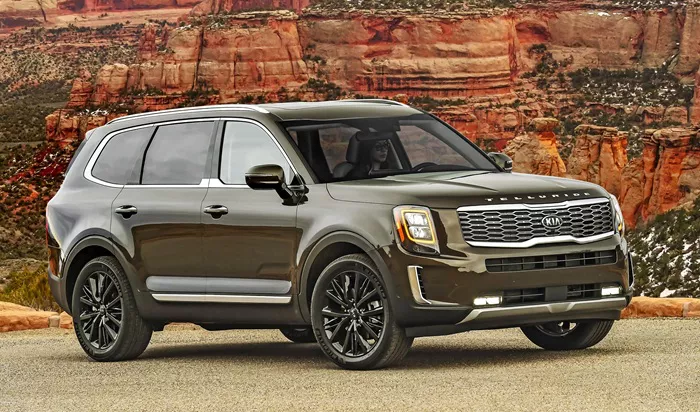The concept of the midsize SUV emerged in the late 20th century. These vehicles struck a balance between the utility of larger SUVs and the fuel efficiency of smaller cars. The development of midsize SUVs can be traced back to the success of SUVs in the 1980s, as manufacturers saw an opportunity to create a vehicle that catered to families and outdoor enthusiasts alike. Unlike their full-size counterparts, these vehicles offered more agility and lower prices while maintaining ample space and off-road capabilities.
The popularity of suv types grew exponentially during the 1990s, thanks to consumer demand for versatile vehicles that could handle both city driving and off-road conditions. This marked a pivotal moment in the automotive world, with many mainstream brands introducing midsize models to meet the growing demand.
Characteristics of Midsize SUVs
Midsize SUVs are known for their balance between space, performance, and affordability. Here are some key characteristics:
Interior Space
These vehicles typically provide comfortable seating for five to seven passengers. With an emphasis on spaciousness, the interior often includes a combination of ample legroom, headroom, and cargo space. Most models offer foldable rear seats to expand storage when necessary, making them suitable for both family trips and transporting large items.
Engine Performance
Midsize SUVs come with a variety of engine options. While the car brands in this segment offer everything from efficient four-cylinder engines to powerful V6 options, the focus is on achieving a balance between power and fuel efficiency. Most midsize SUVs can handle rough terrains without sacrificing on-road comfort, making them popular choices for adventurous families.
Technology and Features
Modern midsize SUVs are equipped with advanced technology to enhance both convenience and safety. These vehicles often feature infotainment systems, driver-assistance technologies, and high-quality materials throughout the cabin. With features such as lane-keeping assist, adaptive cruise control, and touch-screen displays, these vehicles are designed to provide both entertainment and peace of mind to drivers and passengers.
Price Range of Midsize SUVs
The price of a midsize SUV varies significantly depending on the brand, model, and features. On average, midsize SUVs range from $30,000 to $50,000. Entry-level models typically start around $30,000, while higher-end trims with advanced technology and premium features can exceed $50,000. The price is influenced by factors such as drivetrain options, safety features, and luxury amenities.
Affordable Models
Some of the most affordable midsize SUVs include models like the Toyota Highlander and the Honda Pilot. These vehicles offer great value with standard features like Android Auto, Apple CarPlay, and a suite of safety technologies, all while maintaining a budget-friendly price tag.
Premium Models
For those looking for more luxury, brands like BMW and Audi offer midsize SUVs that combine advanced technology, luxury interiors, and powerful performance. Models such as the BMW X5 and Audi Q7 can push the price into the $60,000 to $70,000 range.
Performance of Midsize SUVs
Performance is an important consideration when choosing a midsize SUV. While these vehicles are not built for extreme off-roading, they are designed to handle a variety of driving conditions with ease. Here’s an overview of what you can expect in terms of performance:
Driving Experience
Most midsize SUVs are engineered to provide a smooth driving experience. They combine the best of both worlds, offering stability at high speeds while maintaining agility in urban environments. With advanced suspension systems, these vehicles absorb bumps and potholes with minimal disruption to the passengers.
Off-Road Capabilities
While not all midsize SUVs are designed for serious off-roading, many come with available all-wheel-drive (AWD) or four-wheel-drive (4WD) systems, making them capable of handling moderate off-road conditions. Models like the Jeep Grand Cherokee are well-suited for more rugged terrains, thanks to their durable construction and off-road-oriented features.
Fuel Efficiency
Midsize SUVs generally offer a better fuel economy than full-size SUVs. While the exact mileage depends on the engine and drivetrain, most midsize SUVs can achieve between 20 to 30 miles per gallon (mpg) on the highway. Hybrid models, such as the Toyota RAV4 Hybrid and the Ford Escape Hybrid, offer even better fuel economy, reaching up to 40 mpg in some cases.
Conclusion
Midsize SUVs offer an excellent balance of practicality, performance, and comfort. With a wide range of choices available in terms of price, features, and performance capabilities, these vehicles cater to a broad spectrum of drivers. Whether you’re looking for a family vehicle, a commuter car, or a capable off-road machine, the midsize SUV segment has something for everyone.

